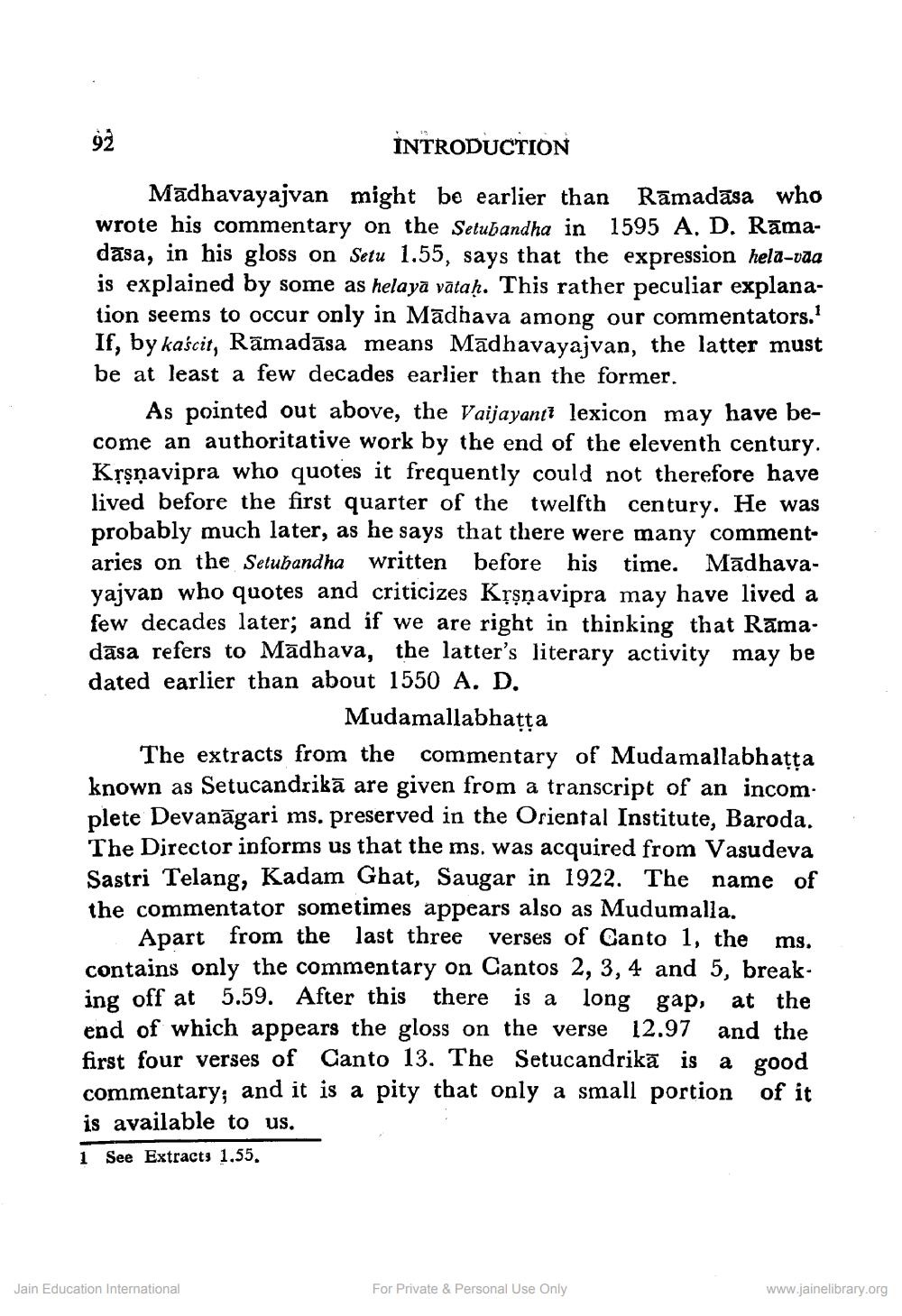________________
INTRODUCTION
Madhavayajvan might be earlier than Rāmadasa who wrote his commentary on the Setubandha in 1595 A. D. Ramadasa, in his gloss on Setu 1.55, says that the expression hela-vaa is explained by some as helayā vātaḥ. This rather peculiar explanation seems to occur only in Madhava among our commentators.' If, by kaścit, Rāmadāsa means Madhavayajvan, the latter must be at least a few decades earlier than the former.
As pointed out above, the Vaijayanti lexicon may have become an authoritative work by the end of the eleventh century. Krşņavipra who quotes it frequently could not therefore have lived before the first quarter of the twelfth century. He was probably much later, as he says that there were many commentaries on the Setuhandha written before his time. Madhavayajvan who quotes and criticizes Krşņavipra may have lived a few decades later; and if we are right in thinking that Rāma. dasa refers to Madhava, the latter's literary activity may be dated earlier than about 1550 A. D.
Mudamallabhatta The extracts from the commentary of Mudamallabhatta known as Setucandrikā are given from a transcript of an incom: plete Devanāgari ms. preserved in the Oriental Institute, Baroda. The Director informs us that the ms. was acquired from Vasudeva Sastri Telang, Kadam Ghat, Saugar in 1922. The name of the commentator sometimes appears also as Mudumalla
Apart from the last three verses of Canto 1, the ms. contains only the commentary on Cantos 2, 3, 4 and 5, breaking off at 5.59. After this there is a long gap, at the end of which appears the gloss on the verse 12.97 and the first four verses of Canto 13. The Setucandrikā is a good commentary; and it is a pity that only a small portion of it is available to us.
1
See Extracts 1.55.
Jain Education International
For Private & Personal Use Only
www.jainelibrary.org




